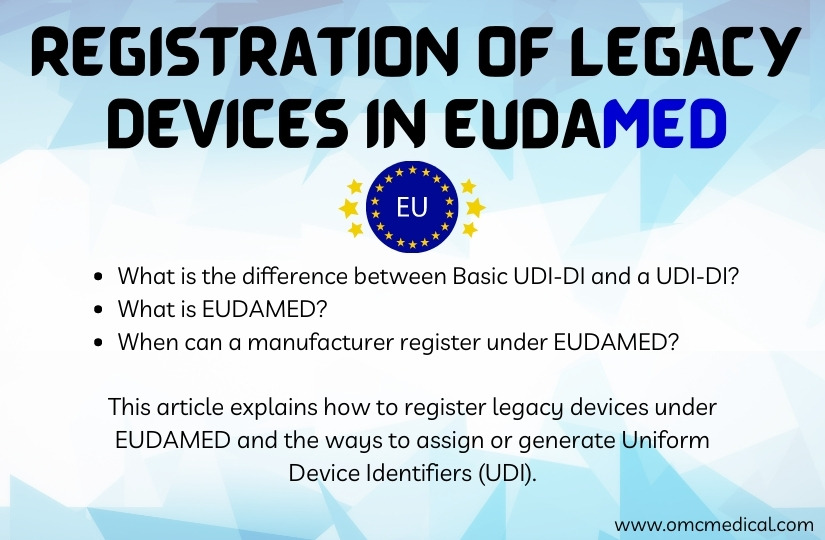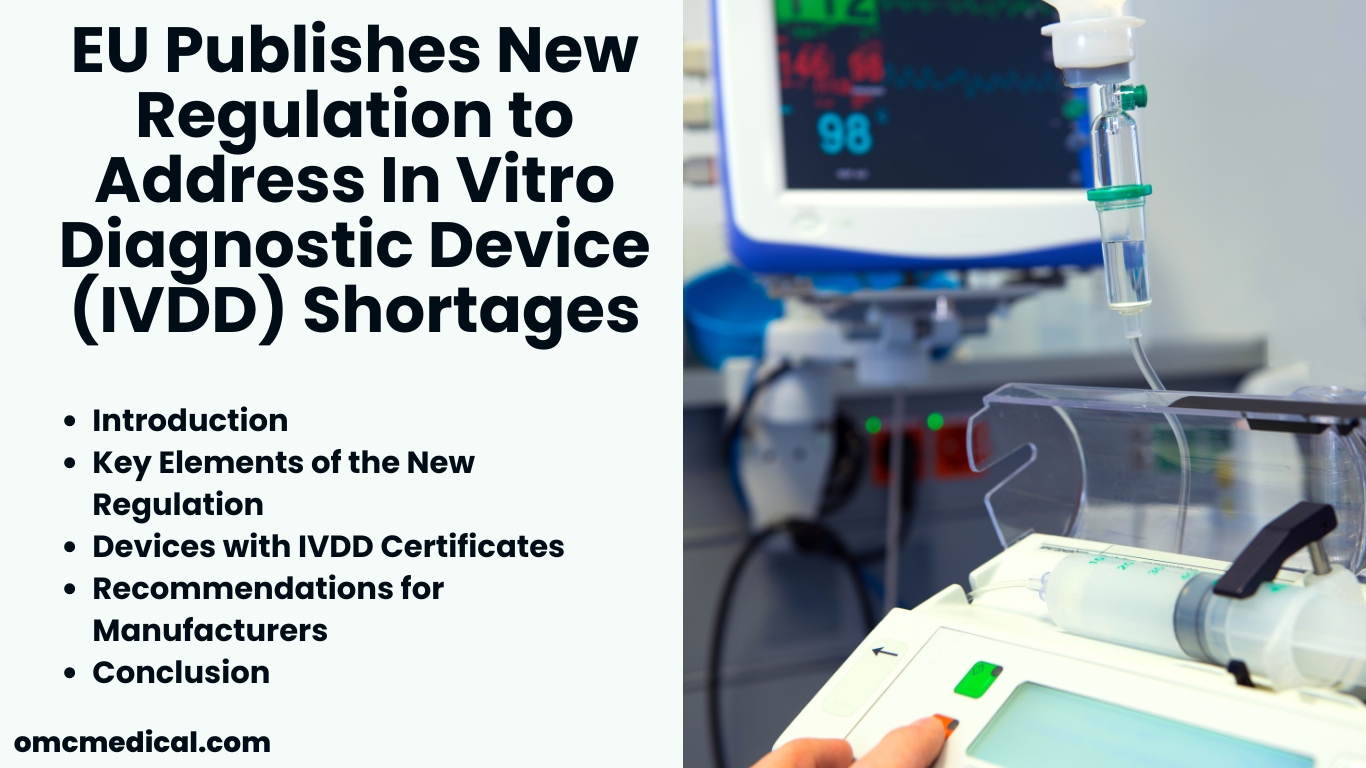Legacy Devices are the medical devices covered by a valid Directive certificate under Directive 93/42/EEC or Directive 90/385/EEC and continue to be placed on the market after the date of application of Regulation (EU) 2017/745 (MDR).
Those devices should be registered under EUDAMED without Basic UDI-DI and a UDI-DI within 18 months after the application is placed or 24 months if the EUDAMED is not fully functional before the date of application.
This registration is mandatory for the manufacturer in case of any serious incidents and if any field safety actions have been taken, at least before the final vigilance report is submitted.
As per MDR device requirements, any medical device registered under EUDAMED will require Basic UDI-DI and UDI-DI, which gets reflected on the database design for future reference.
These legacy devices will need two other unique access keys (UI) to replace basic UDI-DI and UDI-DI to register under EUDAMED. Instead of Basic UDI-DI, the legacy devices will be assigned EUDAMED DI, and instead of UDI-DI, the legacy devices will be assigned EUDAMED ID.
Registration of Legacy Devices

As per the flowchart above,
- If the manufacturer already has UDI-DI assigned to the legacy device, then the EUDAMED DI will be automatically generated based on UDI-DI in the standard format, placing the character “B-“ in front of UDI-DI
- If the manufacturer does not have an assigned UDI-DI for the legacy device, then they will be assigned both EUDAMED DI and EUDAMED ID
The EUDAMED DI can be completely assigned by the EUDAMED or partially taken from the manufacturer using their DI code. But the EUDAMED ID should be completely generated by the EUDAMED.
The EUDAMED DI will start with the character “B”, whereas the EUDAMED ID will start with the character “D” other than the first character EUDAMED DI and the ID will include the SRN number, a number assigned to the manufacturer and check digit.
In addition, the manufacturer should enter their directive certificate identification, such as NB number, revision number, certificate number, and expiry date.
EUDAMED allows the linking of the regulation device with the legacy devices, if the regulation device is exactly the same as the legacy device, they can have the same UDI-DI.
This link may happen automatically by EUDAMED, or the manufacturer can create a link manually by assigning a legacy device identifier, which should happen at the level of UDI-DI.
FAQ
What is the difference between Basic UDI-DI and a UDI-DI?
Basic UDI-DI is a DI assigned to the level of unit use of the device, which is a primary identifier for the device model/family . It is mentioned in the reference CE certificates and the Declaration of Conformity. In contrast, UDI-DI is a unique numeric or alphanumeric code of each device itself , which is used as an access key for the UDI database.
What is EUDAMED?
EUDAMED is a European Database of Medical devices operated by the European Commission to register relevant information on medical devices and to ensure the medical devices’ safety, traceability, and transparency as per MDR 2017/745.
When can a manufacturer register under EUDAMED?
The manufacturer can register their device information/UDI voluntarily in EUDAMED. Moreover, it is mandatory to register legacy and regulatory devices within 24 months after the Commission publishes that the EUDAMED is completely functional.











